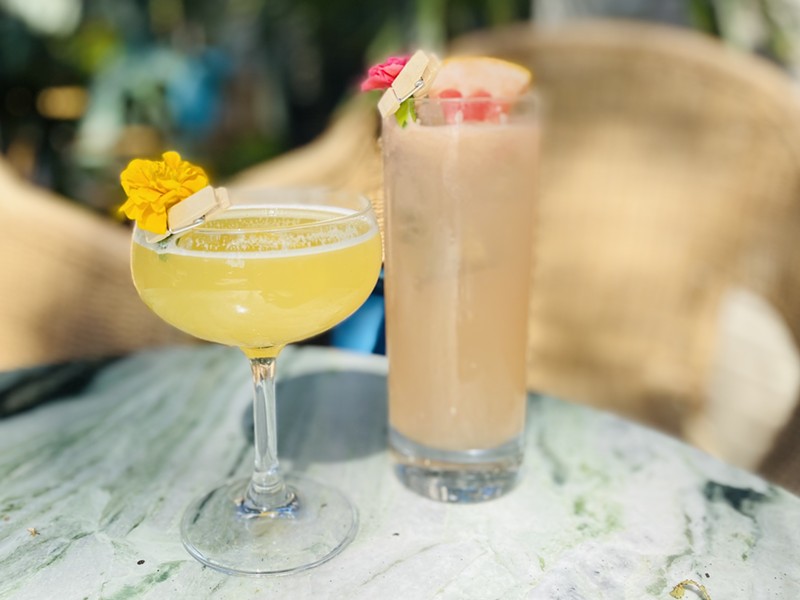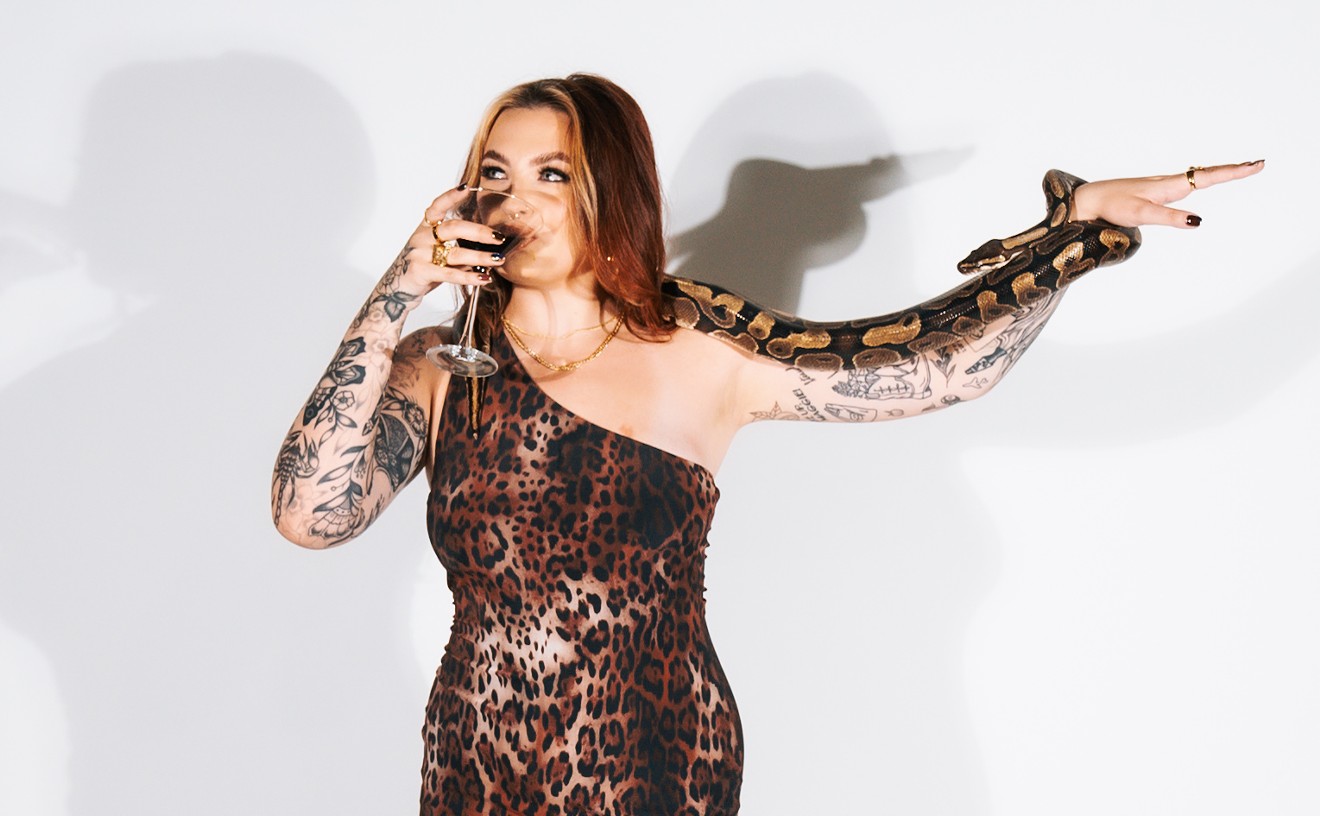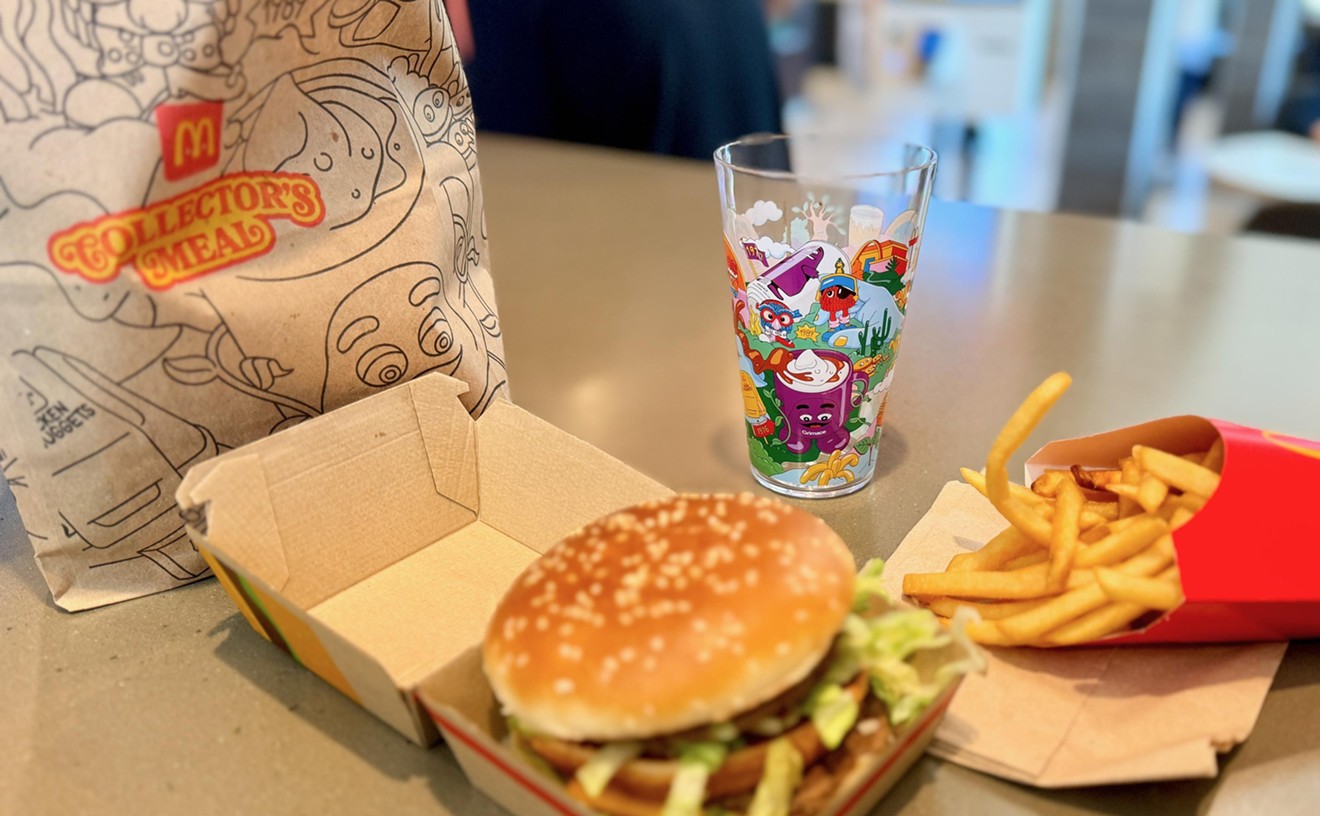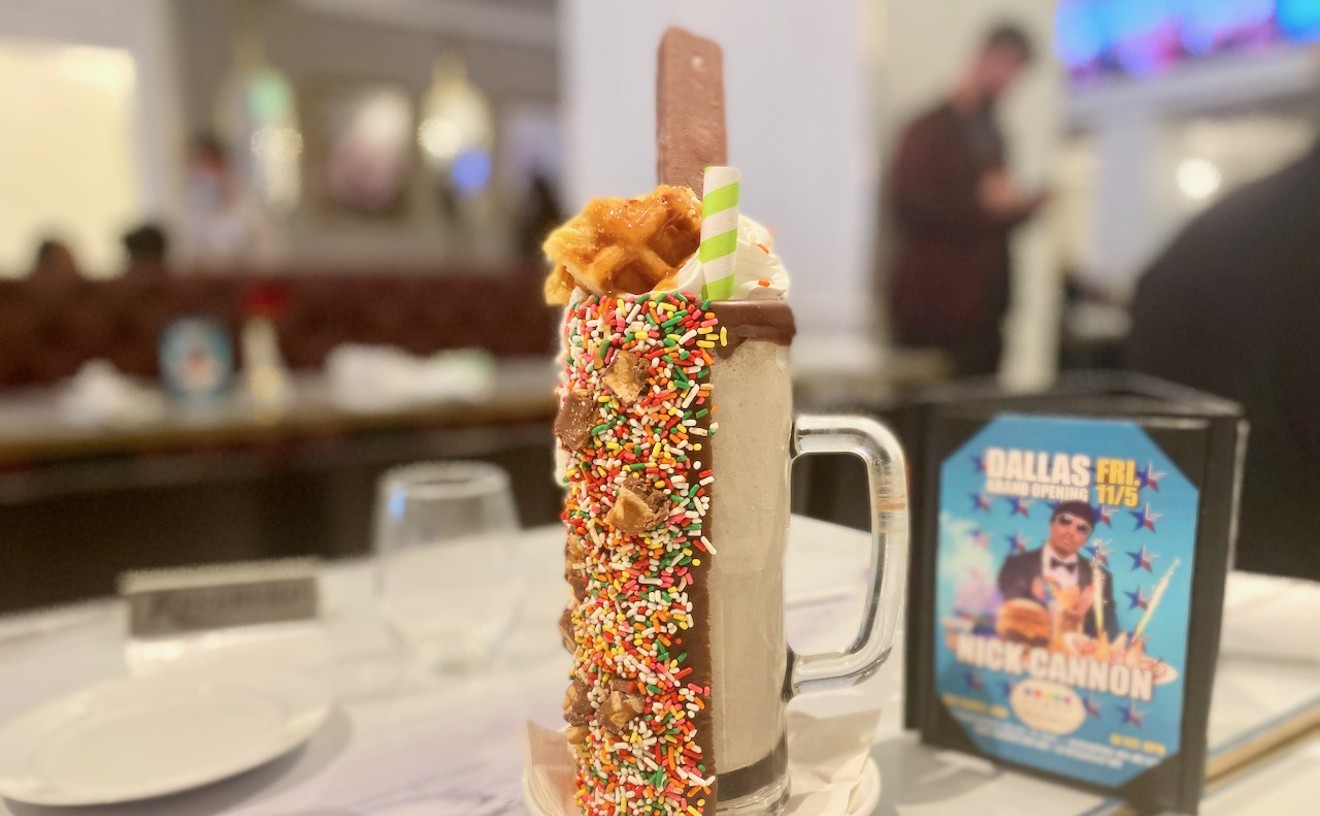As we roll into a new year, many of us are taking stock of — or shots because of — our choices. Different methods to lay off, hit pause or at least slow the flow of alcohol are trending. Some of the options spinning through social media feeds like a Vegas slot machine include Dry January, Damp January and Mindful Drinking, the latter of which has too many videos and views on TikTok to count.
And there's Martha Stewart’s DIY January, which is a partnership with Tito’s Vodka. While it feels like a ruse, they’re actually being serious (maybe). There are videos on different ways to use your vodka instead of drinking it. You just need a nozzle sprayer. (No, not to spray your mouth, you silly head.)
This comes on the heels of a well-documented rise in drinking during the pandemic, particularly for women. For a refresher, when news of a lockdown first broke in 2020, booze was hoarded with the same urgency as toilet paper. Nielsen reported a 54% increase in alcohol sales for the week ending March 21, 2020, compared with the same week the previous year. Online sales were up 262%. The initial stockpiling slowed down, but drinking at home didn’t: A study in Social Science & Medicine showed “increases in alcohol use frequency and increases in the use of alcohol to relax/relieve tension and because of boredom, during the pandemic.”
Then, the spring of 2021 was one giant happy hour. We reported that in April and May of that year, bars across the state had record sales, particularly around Mother's Day.
Now the brakes have been tapped. Mom said slow down. According to a press release from IWSR, which studies the global beverage market, "Once but a sliver of the global beverage alcohol market, no- and low-alcohol beer/cider, wine, spirits, and ready-to-drink (RTD) products grew by more than +6% in volume in 10 key global focus markets in 2021."
Along with that, or perhaps in relation to that, a new term gaining traction is "hangxiety," the big sads or feeling of doom the day after drinking. Dr. Sven Kroener studies drug and alcohol addiction at UT Dallas. He hadn't heard of this new term but doesn't question the connotation.
“Social anxiety is particularly associated with heavy alcohol use,” Dr. Kroener told the Observer. “So if you are already predisposed to have anxiety, then you drink more. But on the other hand, that causes more anxiety, and then you drink more. This is a downward spiral and how people become addicted and stay in addiction.”
What's clear is a rising social acceptance of cutting back or quitting altogether. Emotional well-being, physical health and even money have overtaken any stigma previously assigned to sobriety. It's not a statement of weakness, but rather well-being.
The San Francisco-based company Sunnyside has developed an app to help people imbibe more mindfully. Answer a few questions, type in your email and the app will help set a goal and count drinks like Jenny Craig counts calories. Sunnyside co-founder Ian Anderson has been developing the app and studying the issue for three years and says getting sober has become something people are ready to openly discuss.
“More and more social media influencers are speaking more openly about drinking less and improving their overall health,” Anderson says. He points to hashtags like #mindfuldrinking and #sobercurious that are driving millions of views on social media.
Anderson says observers are also seeing increases in trends around hashtags like #alcoholfreejourney, which is trending up, "especially among Millennials and Gen Z."
Kroener at UTD emphasizes that short-term goals like Dry January won't replace medical treatment needed for addiction, but he says that if some level of awareness can be achieved and people realize the health benefits and social interactions benefits, then that’s great.
“But is this [short-term goals] a replacement for people who have real issues and are already alcoholics? That’s highly, highly doubtful," Kroener says.
As for restaurants and bars, they're adjusting too. For a primer, if you see AF on a menu, it's not "as fuck," but rather alcohol-free. And "NA" doesn't mean something is not applicable or available, just non-alcoholic. "Zero-proof?" Unlike an 18% proof glass of red wine, it just means zero booze.
"The days of O'Douls hidden on the back shelf are over, but plenty of people now don't want alcohol or to overindulge," says Andrea Benningfield, who started the Instagram page Dallas Zero Proof; check out the full backstory on CultureMap.
Benningfield told the Observer that she and her wife, Jenny, who is in the coffee industry, joined forces with two former bar owners who were ready to get out of the booze business for personal health reasons. The idea was inspired by a trip to Chicago, which, she says, has a "vibrant AF scene."
They're launching a new AF concept, BBBevCo. (Beyond Booze Beverage Co.) with a pop-up on Jan. 14. This "casual but sophisticated AF event" will celebrate Dry January and going out without imbibing.
"We are discovering that we are not at all alone. Many people are less interested in getting blitzed and hungover the next day," Benningfield says.
A key mission for BBBevCo is to illustrate that sobering up doesn't have to be lonely. Benningfield feels that going to have drinks with friends is one of the main ways people spend their evenings out, but having options is more important now.
Another hurdle for some is finding a decent nonalcoholic drink while out. A recent reviewer on Yelp bemoaned that when she asked for a "mocktail" at a bar, the server had no idea what she was talking about. In the end, she got a glass of juice. We recently did a round-up of bars with mocktail options, most of which read like a mixologist's playbook. Even better, these drinks are affordable; no bank account hangover in the morning.
Marian Scaturro, general manager at Clifton Club, says the staff is getting more requests for low-alcohol drinks now, a culture shift from a few years ago when people wanted to drink "hard and fast."
"People appreciate spirits more and their bodies a little more now," Scaturro says. She says the club carries a high-end line of alcohol-like spirits, Lyre's, that closely mimic the nuances of proper adult beverages.
While getting a good mocktail at a bar should be easier all around, Sunnyside's Anderson says most don't want to stop drinking completely.
"That said, sobriety is a non-starter for most," he points out. "Seventy-five percent of U.S. adults drink, and 47% want to cut back on their drinking, but they don't want to go sober. They enjoy the conviviality it can bring to social situations, the relaxation it can bring at the end of a long day."
Perhaps this is why just a tipple of sobriety is doing so well now.

Audio By Carbonatix
[
{
"name": "Air - MediumRectangle - Inline Content - Mobile Display Size",
"component": "18855504",
"insertPoint": "2",
"requiredCountToDisplay": "2",
"watchElement": ".fdn-content-body",
"astAdList": [
{
"adType": "rectangle",
"displayTargets": "mobile"
}
]
},{
"name": "Editor Picks",
"component": "17105533",
"insertPoint": "4",
"requiredCountToDisplay": "1",
"watchElement": ".fdn-content-body",
"astAdList": [
{
"adType": "rectangle",
"displayTargets": "desktop|tablet"
},{
"adType": "rectangle",
"displayTargets": "desktop|tablet|mobile"
}
]
},{
"name": "Inline Links",
"component": "18349797",
"insertPoint": "8th",
"startingPoint": 8,
"requiredCountToDisplay": "7",
"maxInsertions": 25
},{
"name": "Air - MediumRectangle - Combo - Inline Content",
"component": "17105532",
"insertPoint": "8th",
"startingPoint": 8,
"requiredCountToDisplay": "7",
"maxInsertions": 25,
"watchElement": ".fdn-content-body",
"astAdList": [
{
"adType": "rectangle",
"displayTargets": "desktop|tablet"
},{
"adType": "rectangle",
"displayTargets": "desktop|tablet|mobile"
}
]
},{
"name": "Inline Links",
"component": "18349797",
"insertPoint": "8th",
"startingPoint": 12,
"requiredCountToDisplay": "11",
"maxInsertions": 25
},{
"name": "Air - Leaderboard Tower - Combo - Inline Content",
"component": "17105535",
"insertPoint": "8th",
"startingPoint": 12,
"requiredCountToDisplay": "11",
"maxInsertions": 25,
"watchElement": ".fdn-content-body",
"astAdList": [
{
"adType": "leaderboardInlineContent",
"displayTargets": "desktop|tablet"
},{
"adType": "tower",
"displayTargets": "mobile"
}
]
}
]













